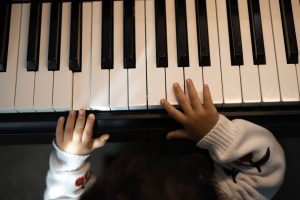Table of Contents
- Introduction to Online Piano Lessons
- Choosing the Right Location for Your Piano
- Setting Up Your Piano and Equipment
- Optimizing Your Internet Connection
- Lighting for Online Lessons
- Creating a Distraction-Free Environment
- Maintaining Your Equipment
- Conclusion
Introduction to Online Piano Lessons
Online piano lessons have surged in popularity, especially with the advent of advanced technology and the increasing demand for flexible learning options. These lessons offer the unique advantage of learning from the comfort of your own home, scheduling sessions that fit into your busy life and gaining access to professional instructors from around the world. To make the most of your virtual lessons with a virtual piano instructor, it’s essential to set up your learning environment effectively. Here’s how you can create an optimal space that will enhance your online piano learning experience.
Choosing the Right Location for Your Piano
The first step in setting up your space for online piano lessons from Forbes Music Company is choosing an appropriate location for your instrument. To help you stay focused throughout your lessons, try to find a place that is peaceful and has few outside distractions. Even though windows provide natural light, you should avoid placing your piano directly under one to avoid glare on your computer or tablet screen, which will make it difficult for you and your instructor to see clearly. According to The New York Times, a dedicated, distraction-free environment significantly enhances the effectiveness of virtual music education, allowing students to concentrate fully on their lessons.
Setting Up Your Piano and Equipment
Once you’ve chosen the perfect spot, it’s time to set up your piano and other necessary equipment. Ensure your piano or keyboard is at the correct height to promote good posture and prevent strain during longer practice sessions. A comfortable seat, preferably an adjustable piano bench, can help maintain proper posture. To facilitate effective virtual lessons, having high-quality audio and video tools is crucial. A good camera angle is essential for your instructor to observe your hand positioning and technique. Logitech webcams are a popular choice among students for their high-definition quality and ease of use. Additionally, using an external microphone can significantly improve sound quality, allowing your instructor to hear your playing clearly, which is particularly important for receiving precise feedback.
Ensuring Proper Camera Angles
When setting up your camera, make sure it captures both your hands and the keyboard clearly. This may require experimenting with different angles to find the best positioning. Proper camera placement helps your instructor provide detailed guidance on your technique, finger placement, and posture, which is especially important for beginners who are still getting accustomed to the instrument.
Optimizing Your Internet Connection
In the realm of online lessons, a stable internet connection is non-negotiable. Because it tends to be more dependable and offers a more consistent speed than Wi-Fi, a wired connection utilizing an Ethernet cable is frequently recommended. If you rely on Wi-Fi, ensure that your router is up to date and placed close to your learning space to minimize connectivity issues. According to TechRadar, a minimum speed of 25 Mbps is recommended for smooth video streaming. Regularly checking your internet speed might help you stay ahead of any possible problems that might interfere with your educational process.
Lighting for Online Lessons
Proper lighting plays a vital role in online learning. Position a light source behind your camera to illuminate your keyboard and hands, making it easier for your instructor to observe your playing. Avoid lighting from behind you, as it can create shadows on your keyboard and make it difficult for your instructor to see your movements. Consider using a combination of natural light during the day and additional desk lamps or ring lights to ensure consistent illumination, regardless of the time of day.
Creating a Distraction-Free Environment
An environment free from distractions is essential for productive learning. Choose a room or an area of your house that is away from high-traffic zones and household activities. Inform your family members or housemates about your lesson schedule to minimize interruptions. Additionally, turn off notifications on your phone, computer, and other devices to stay focused during your lesson. A quiet and organized space not only helps you concentrate but also shows your instructor that you are serious about your lessons.
Maintaining Your Equipment
Maintaining the optimal condition and functionality of your piano and its accompanying equipment requires routine maintenance. Keep your keyboard clean and free of dust, as accumulated dust can affect the functionality of the keys and the quality of the sound. Routinely check your audio and video equipment to ensure they are working correctly. Periodically updating your router and running speed tests can help you maintain a stable internet connection, which is essential for uninterrupted online lessons. Taking care of your equipment ensures that your learning experience remains smooth and effective.
Conclusion
Setting up your space for online piano lessons doesn’t have to be complicated. By following these tips, you can create a conducive learning environment that enhances your virtual piano experience. Remember, a well-organized space not only reflects your commitment but also helps you get the most out of your lessons, making your musical journey both productive and enjoyable. With the right setup, you can fully engage in your lessons, focus on improving your skills, and enjoy the convenience and flexibility that online piano lessons offer.








